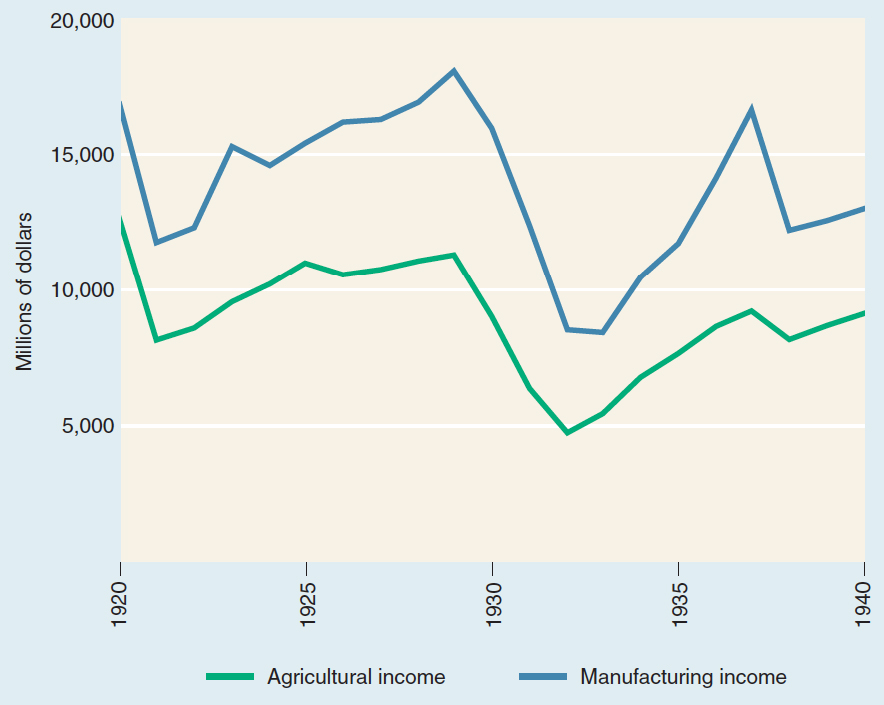The Human Toll.
Printed Page 643 Chapter Chronology
The Human Toll. Statistics only hint at the human tragedy of the Great Depression. When Herbert Hoover took office in 1929, the American economy stood at its peak. When he left in 1933, it had reached its twentieth-century low (Figure 23.1). In 1929, national income was $88 billion. By 1933, it had declined to $40 billion. In 1929, unemployment was 3.1 percent, or 1.5 million workers. By 1933, unemployment stood at 25 percent, almost thirteen million workers. By 1932, more than 9,000 banks had shut their doors, wiping out millions of savings accounts.

Jobless, homeless victims wandered in search of work, and the tramp, or hobo, became one of the most visible figures of the decade. Riding the rails or hitchhiking, a million vagabonds moved southward and westward looking for seasonal agricultural work. Other unemployed men and women, sick or less hopeful, huddled in doorways, overcome, one man remembered, by "helpless despair and submission." Scavengers haunted alleys behind restaurants in search of food. "I don't want to steal," a Pennsylvania man wrote to the governor in 1931, "but I won't let my wife and boy cry for something to eat. ... How long is this going to keep up? I cannot stand it any longer."
Rural poverty was most acute. Tenant farmers and sharecroppers, mainly in the South, came to symbolize how poverty crushed the human spirit. Eight and a half million people, three million of them black, crowded into cabins without plumbing, electricity, or running water. They subsisted — just barely — on salt pork, cornmeal, molasses, beans, peas, and whatever they could hunt or fish. When economist John Maynard Keynes was asked whether anything like this degradation had existed before, he replied, "Yes, it was called the Dark Ages and it lasted four hundred years."

There was no federal assistance to meet this human catastrophe, only a patchwork of strapped charities and destitute state and local agencies. For a family of four without any income, the best the city of Philadelphia could do was provide $5.50 per week. That was not enough to live on but better than Detroit, which allotted 60 cents a week before the city ran out of money altogether.
The deepening crisis roused old fears and caused some Americans to look for scapegoats. Among the most thoroughly scapegoated were Mexican Americans. During the 1920s, cheap agricultural labor from Mexico flowed legally across the U.S. border, welcomed by the large farmers. In the 1930s, however, the public denounced the newcomers as dangerous aliens who took jobs from Americans. Government officials, most prominently those in Los Angeles County, targeted Mexican residents for deportation regardless of citizenship status. As many as half a million Mexicans and Mexican Americans were deported or fled to Mexico.
The depression deeply affected the American family. Young people postponed marriage. When they did marry, they produced few children. White women, who generally worked in low-paying service areas, did not lose their jobs as often as men who worked in steel, automobile, and other heavy industries. Idle husbands suffered a loss of self-esteem. "Before the depression," one unemployed man reported, "I wore the pants in this family, and rightly so." Jobless, he lost "self-respect" and also "the respect of my children, and I am afraid that I am losing my wife." Employers discriminated against married women workers, but necessity continued to drive women into the marketplace. As a result, by 1940 some 25 percent more women were employed for wages than in 1930.